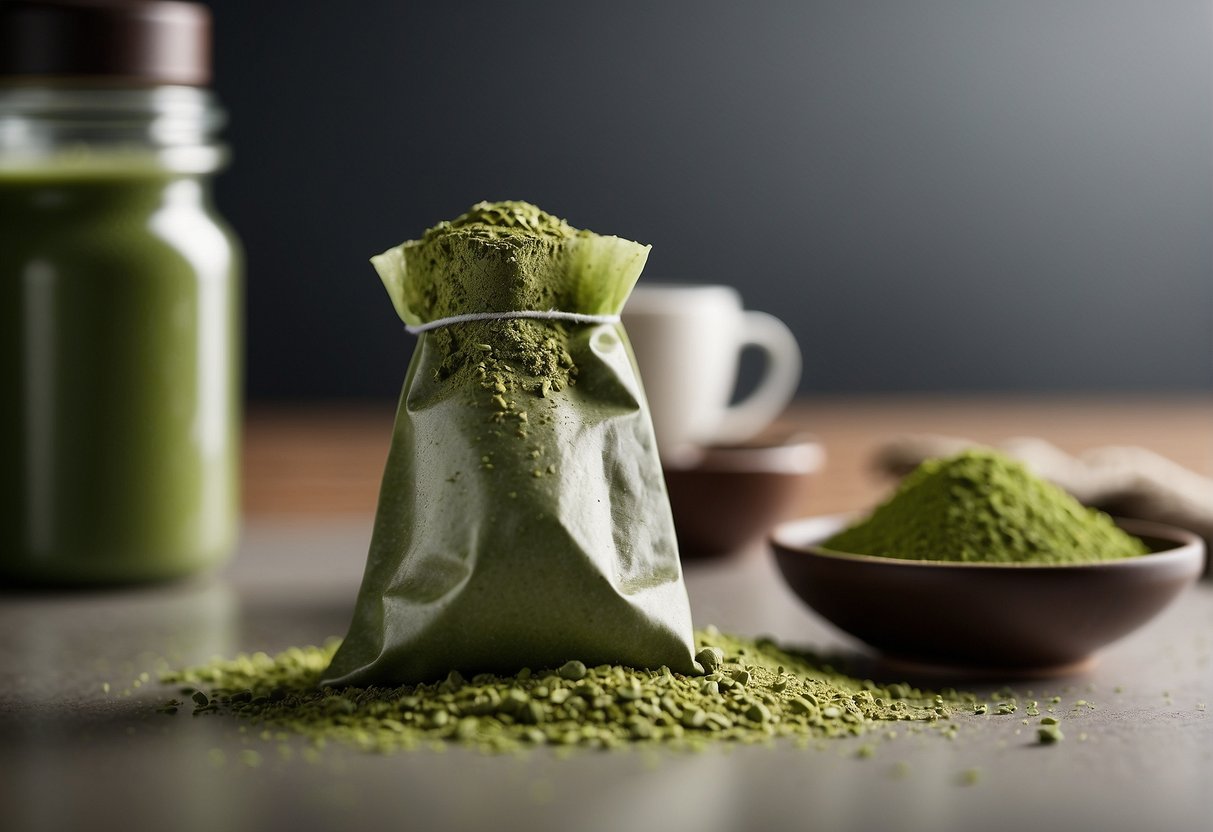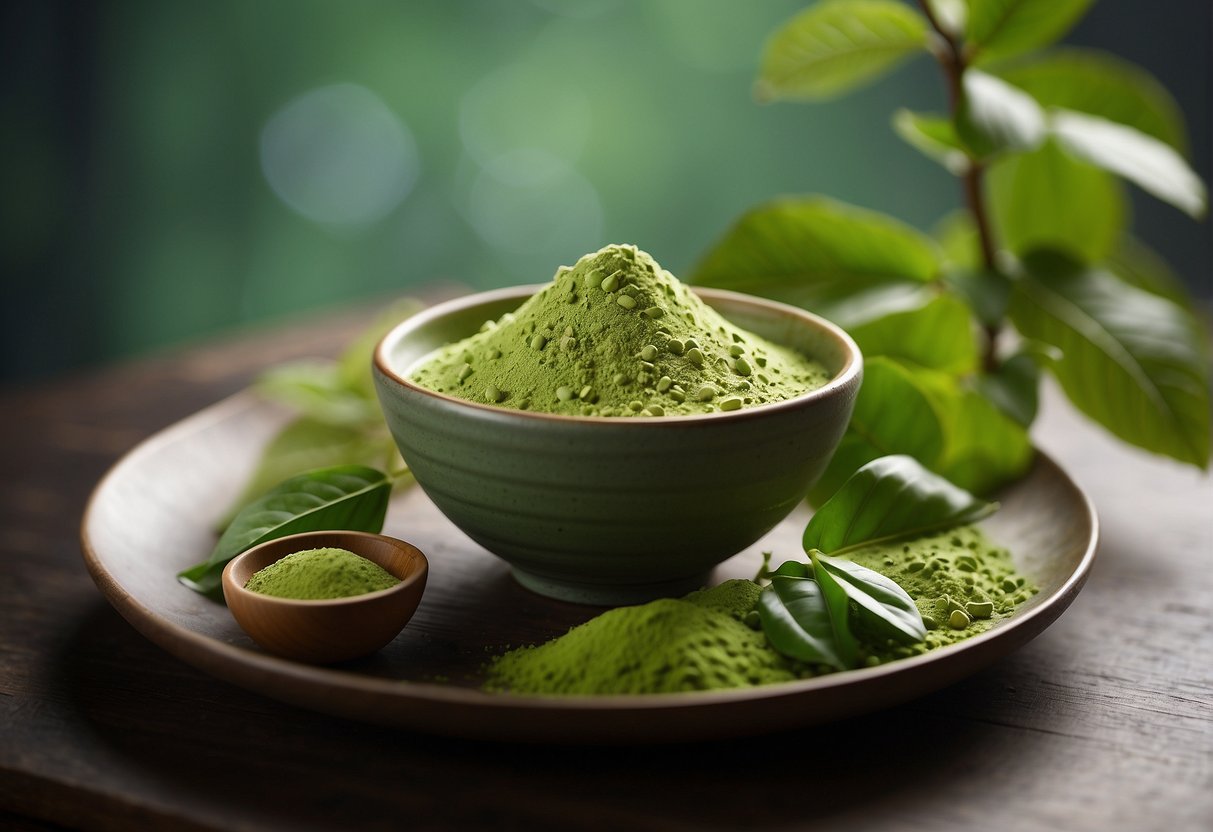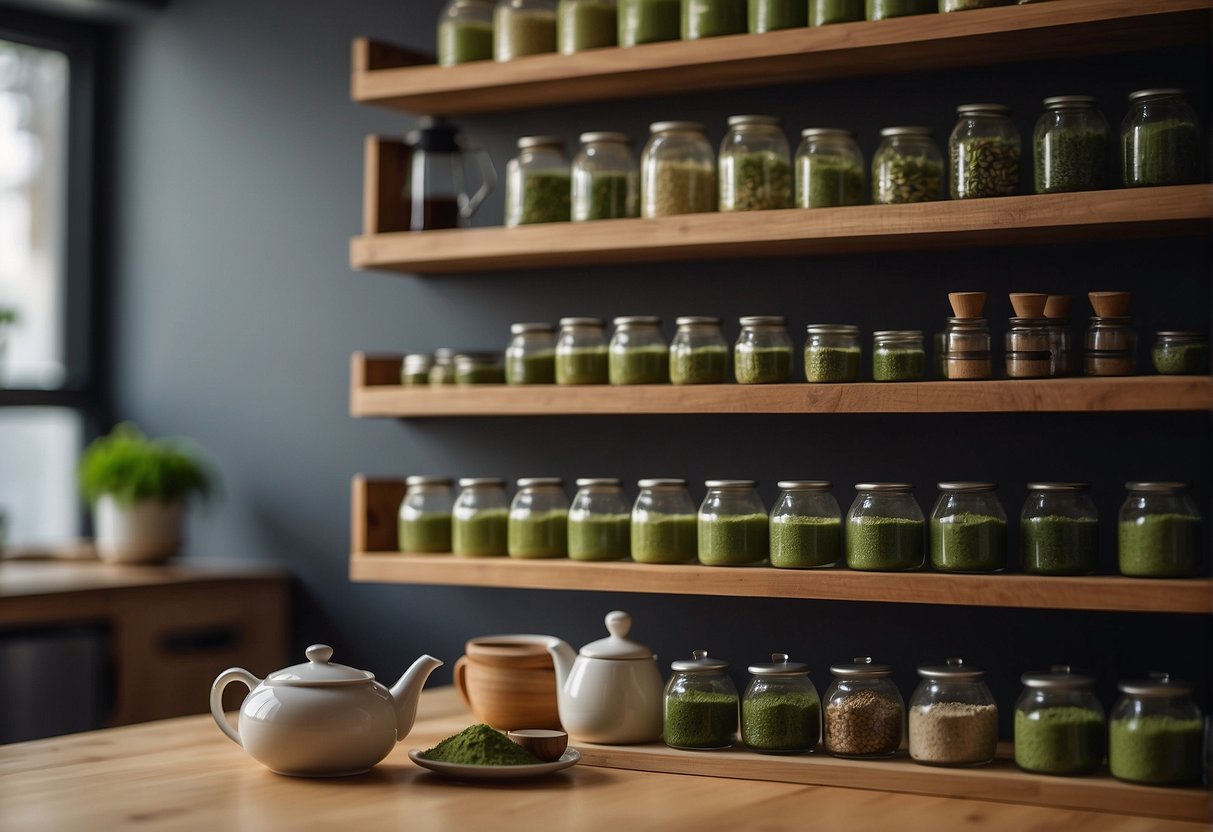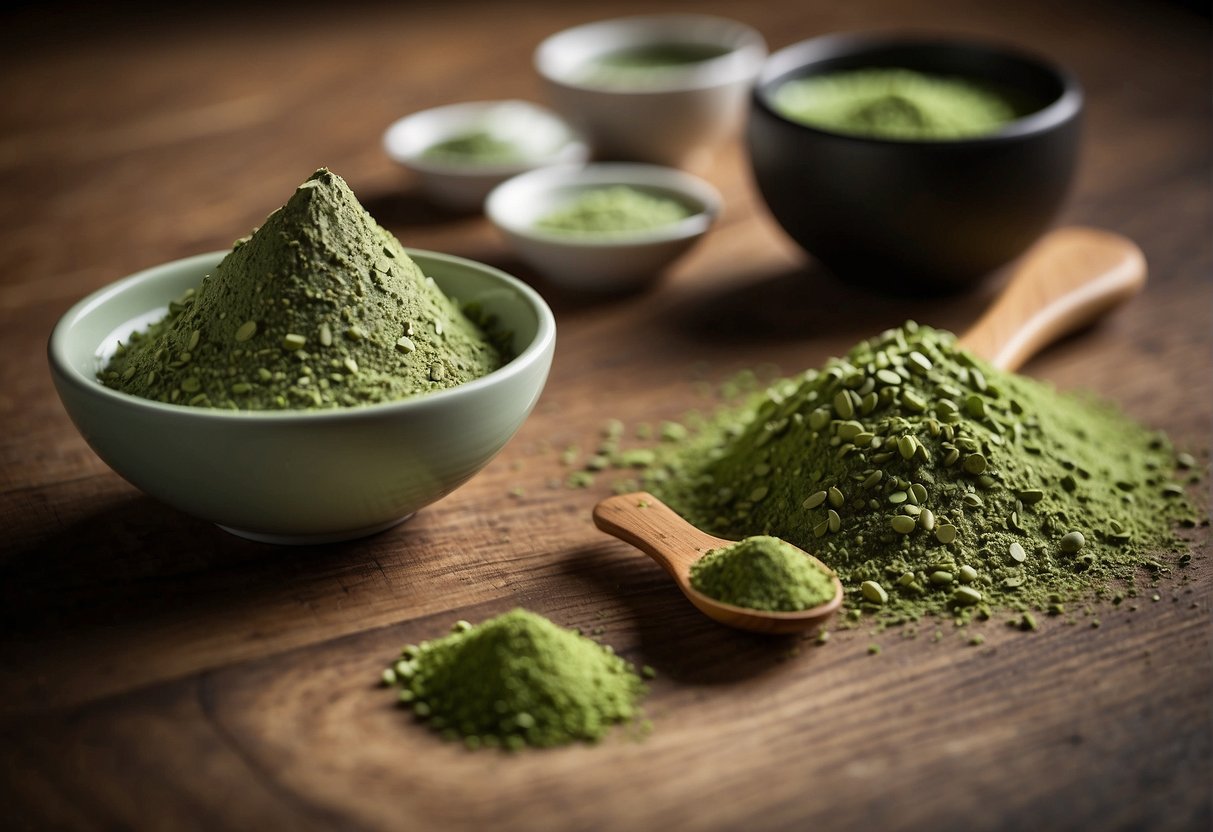Matcha has gained popularity worldwide for its rich flavor and impressive health benefits. Unlike regular green tea, which is steeped from leaves, matcha is made from ground tea leaves, which provides a more concentrated tea experience. When you’re shopping for matcha, you’ll typically find two main forms: tea bags and powder. Both offer the unique taste and benefits of matcha, but there are differences in preparation, versatility, and experience that might sway your preference.

Matcha tea bags are convenient and familiar, making them a perfect choice if you’re always on the go. They provide a quick and easy way to enjoy matcha without the need for additional tools. Just steep the bag in hot water, and you’re ready to enjoy. On the other hand, matcha powder offers a more traditional experience. This fine green powder is whisked with water to create a frothy, creamy beverage. With powder, you have the flexibility to control the strength of your tea and use matcha in various recipes, like smoothies or baked goods.
When choosing between matcha tea bags and powder, consider your lifestyle and how you like to enjoy your green tea. Are you looking for convenience, or are you keen to experiment with the versatility of matcha? Each form has its own merits and provides you with the wonderful health benefits and unique flavor profile of matcha.
Matcha Essentials: Tea Bags vs Powder
When choosing between matcha tea bags and powder, you’re balancing quality, convenience, and the nuances of preparation. This comparison will help you understand the differences and determine which form suits your lifestyle and palate.
Understanding Matcha Tea
Matcha originates from the Camellia sinensis plant, the same plant that gives us other types of green tea. However, matcha is unique due to its cultivation process, where tea plants are shaded before harvest to boost chlorophyll levels and enrich the flavor profile. Whether you select powder or tea bags, matcha is renowned for its vibrant green color and rich, umami flavor.
Forms of Matcha: Powder and Tea Bags
Matcha Powder:
- Quality: Matcha powder often offers a superior grade, ensuring maximum flavor and nutrient content. Its quality is influenced by factors like growing conditions, processing methods, and particle size.
- Preparation: Involves whisking the powder with hot water using a bamboo whisk to achieve a frothy texture, a ritual that can be quite meditative.
- Flexibility: You have the control to adjust the strength of your tea to your taste, and it can be used in various recipes, from lattes to baked goods.
| Pros | Cons |
|---|---|
| Higher quality flavor | Requires more effort to prepare |
| Versatile for multiple recipes | Typically more expensive than tea bags |
| Full nutrient benefits | Requires additional tools (whisk, bowl) |
Matcha Tea Bags:
- Convenience: Pre-filled tea bags provide a quick and easy option, especially if you’re short on time or on the go.
- Preparation: Simply steeping the tea bag in hot water is enough, eliminating the need for extra tea accessories.
- Quality: While still beneficial, tea bags may contain a mix of matcha and other green teas, leading to a potential compromise in the intensity of matcha’s flavor and health benefits.
| Pros | Cons |
|---|---|
| Quick and convenient | Lower intensity of matcha flavor |
| No need for extra tools | May include blends rather than pure matcha |
| Better for those new to matcha | Less control over the strength of the tea |
The Making of Matcha: Production Differences
Matcha tea, derived from the Camellia sinensis plant, is available in tea bag and powder forms. Both forms undergo distinct production processes and vary in quality grades, influencing their use in ceremonies and daily consumption.
Production Processes
Matcha powder is created using leaves from the Camellia sinensis plant which are shade-grown to increase chlorophyll content, giving matcha its vibrant green color. After about three weeks of shading, the leaves are hand-picked, with the highest quality batches destined for ceremonial-grade matcha. These select leaves are then steamed to halt fermentation, air-dried, and destemmed. The remaining pure leaf material, known as tencha, is then ground into a fine powder using traditional stone mills.
Tea bags containing matcha usually consist of the same plant but have a different treatment. The leaves might be shade-grown but are often part of a lower quality batch and ground more roughly. They can also include parts of the leaf usually discarded in the ceremonial-grade matcha production process. The ground tea is then portioned into bags, making it convenient for steeping.
Quality and Grade Variations
- Ceremonial-Grade Matcha:
- Made from the youngest, highest quality leaves
- Fine, stone-ground, maintaining nutrients and flavor
- Ideal for traditional Japanese tea ceremonies
- Culinary-Grade Matcha:
- Harvested from older leaves
- More roughly ground
- Commonly used for cooking or casual drinking
Matcha powder comes in various grades with ceremonial-grade being the highest quality used in traditional Japanese tea ceremonies. It possesses a finer texture and a more delicate flavor profile. In contrast, the matcha found in tea bags tends to be of a lower quality, often referred to as culinary-grade, which is bolder in flavor and coarser in texture, serving a more general purpose.
Taste and Aroma: The Flavor Profiles of Matcha
When you sip on matcha, you’re indulging in a unique flavor profile defined by its taste and aroma, with nuances ranging widely depending on whether you’re using tea bags or powder.
Comparing Flavors Between Tea Bags and Powder
Matcha tea bags and powder forms offer distinct experiences in flavor and aroma. Here’s what you can typically expect from each:
- Matcha Powder:
- Flavor: Rich, full-bodied, and vibrant with a fresh, grassy note.
- Aroma: A more intense, earthy fragrance that’s both sweet and vegetal.
- Matcha Tea Bags:
- Flavor: Generally more muted and subtle than powder form with a slight bitterness.
- Aroma: Less pronounced with fewer grassy notes than its powdered counterpart.
If you’re looking for an authentic matcha experience, matcha powder usually delivers a more complex and nuanced flavor profile due to its higher concentration of the leaves.
The Significance of Umami
Umami, often described as a savory taste, is a key component in matcha’s flavor profile:
- Umami Flavor in matcha comes from high levels of amino acids, particularly L-Theanine, which is abundant in the shaded growth phase prior to harvest.
- In matcha powder, the umami flavor is more pronounced, as you consume the entire tea leaf, leading to a deeper, more satisfying taste.
- Matcha tea bags may contain less of this umami richness due to the processing and packaging, which can affect the amino acids concentration.
When you choose matcha powder, you’re essentially getting a stronger umami presence, a feature highly prized by matcha connoisseurs and often associated with a higher quality tea experience.
Health and Wellness: Benefits of Matcha

Matcha, a finely ground powder made from green tea leaves, is celebrated for its health benefits, ranging from enhancing mental clarity to boosting physical wellness.
Comparative Advantages of Matcha Tea Bags and Powder
When you choose matcha powder, you benefit from the whole green tea leaf, which results in a higher intake of antioxidants, particularly catechins like EGCG (epigallocatechin gallate). These potent compounds are known for their ability to promote heart health and maintain healthy blood sugar levels.
Matcha tea bags, on the other hand, might be less potent as they often contain a mixture of matcha with traditional green tea leaves, thus diluting the concentration of catechins. However, they still provide a convenient way to enjoy some of matcha’s health properties—and are easier to brew than the powder.
Matcha for Mental and Physical Well-being
Mental Clarity & Focus
- Caffeine: Matcha contains caffeine, which can increase your alertness and concentration levels.
- L-Theanine: Alongside caffeine, matcha is rich in L-theanine, an amino acid that promotes relaxation without drowsiness, synergistically enhancing focus.
Physical Health
- Metabolism: Consuming matcha can enhance your metabolism, aiding in weight management.
- Immune Function: The antioxidants and EGCG in matcha support your immune function, helping to protect your body against pathogens.
Incorporating matcha into your daily regimen, whether as a tea bag or powder, can contribute to your overall wellness journey.
Practical Considerations: Lifestyle and Budget

When choosing between matcha tea bags and powder, consider how they fit into your daily routine and the amount you’re willing to spend.
Ease of Use and Time Investment
Using matcha tea bags is straightforward: just steep them in hot water. It’s a suitable option if you’re often on the go and value convenience. However, matcha tea bags generally offer less versatility since they’re pre-measured and designed for a quick brew.
On the other hand, matcha powder requires a bit more effort. You’ll spend time measuring the powder, whisking it, and ensuring it’s well dissolved. The process is a small ceremony, allowing for a range of uses from traditional tea to being an ingredient in smoothies or baked goods. For those who enjoy a more hands-on approach or have the luxury of time, matcha powder can be a ritualistic and satisfying part of your routine.
- Matcha Tea Bags
- Convenience: High
- Preparation Time: Minimal (1-2 minutes)
- Matcha Powder
- Convenience: Lower
- Preparation Time: Longer (3-5 minutes)
Price Points and Valuing Matcha
Your choice may also come down to cost and whether you’re seeking organic options.
Matcha tea bags are often less expensive upfront and might be a cost-effective solution for your daily matcha intake. They are budget-friendly, typically available in larger quantities, and provide a convenient way to enjoy matcha without a significant financial commitment.
| Matcha Tea Bags | Matcha Powder |
|---|---|
| Cost-Effective | Higher Investment |
| Standard and organic | Organic often available at a premium |
In contrast, matcha powder comes in a range of prices, influenced by quality, origin, and whether it is organic. Organic matcha, which is grown without synthetic fertilizers and pesticides, is ideal for those wanting a purer product, but it often commands a higher price. Although the initial price is more significant, the versatility and rich flavor profile can justify the cost for enthusiasts.
- Matcha Powder High-Quality
- Cost: Higher per serving
- Organic Options: Widely available
- Matcha Powder Standard
- Cost: Moderate per serving
- Organic Options: More limited
Reflect on your lifestyle and budget constraints when picking between tea bags and powder. Your preference for convenience or a more immersive experience will tip the scales.
Frequently Asked Questions

Matcha tea enthusiasts often debate the merits of matcha powder versus tea bags. These FAQ address some of the specifics you might be curious about.
What are the advantages of using matcha powder over tea bags?
Matcha powder offers a richer flavor and allows you to adjust the strength of your tea. It contains the entire leaf, providing more antioxidants and nutrients than what’s typically found in tea bags.
How do matcha tea bags compare in quality to traditional matcha powder?
Matcha tea bags often contain a mixture of matcha and filler green tea, potentially resulting in a diluted flavor and fewer health benefits compared to pure matcha powder.
Can regular green tea bags be used as a substitute for matcha powder?
While both come from the same plant, regular green tea bags are not a substitute for matcha powder. Matcha is made from shade-grown leaves stone-ground into a fine powder, offering a distinct taste and higher nutrient content.
What is the difference between matcha tea and matcha powder?
Matcha tea refers to the beverage made from whisking matcha powder with water, whereas matcha powder is the raw, ground form of the tea leaves used to make the drink.
Are there any special methods for preparing matcha with powder?
Yes, traditional preparation involves sifting the matcha powder and whisking it with hot water using a bamboo whisk to create a frothy, smooth tea. It’s a unique and ceremonial method of preparation.
Where can one find high-quality organic matcha powder?
High-quality organic matcha powder is often found at specialty tea shops, health food stores, or through reputable online retailers. Look for ceremonial-grade matcha for the purest form.
